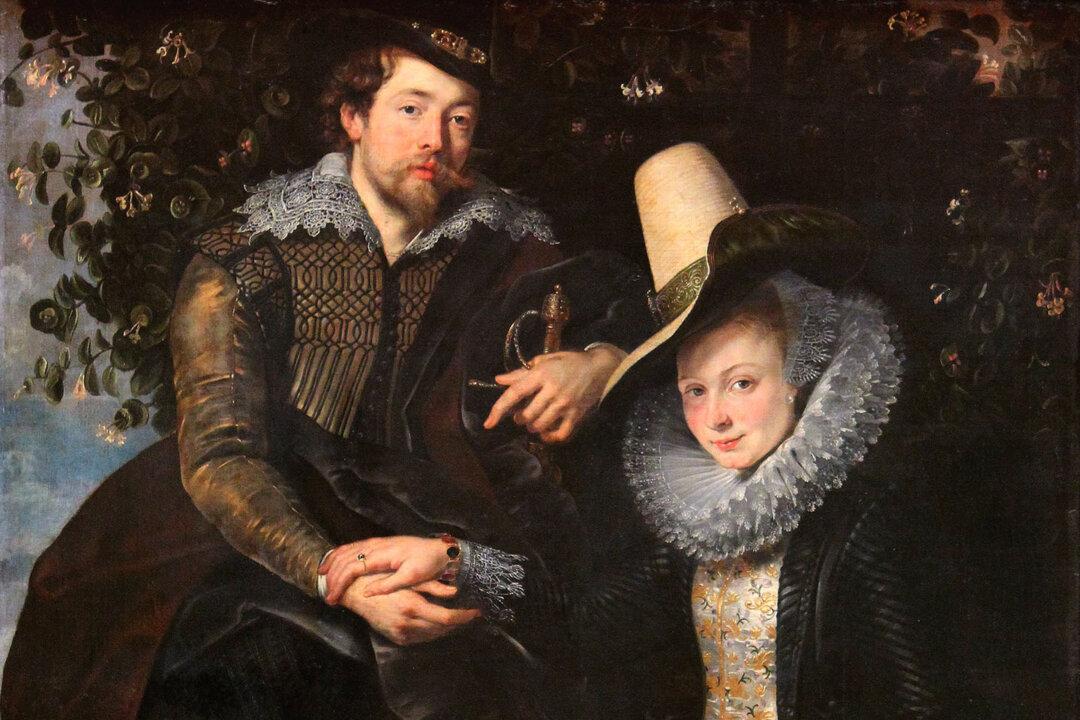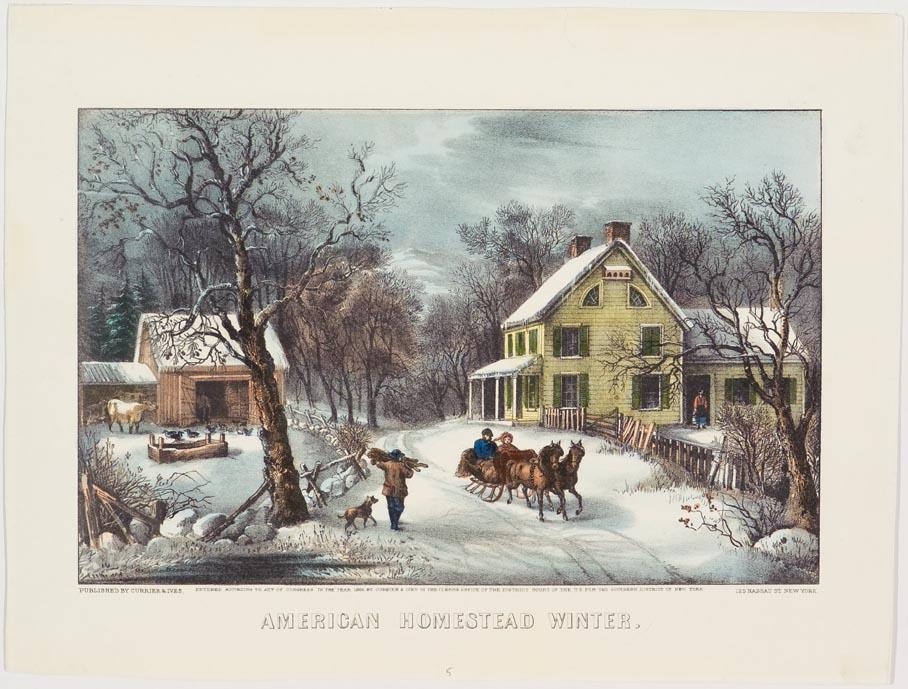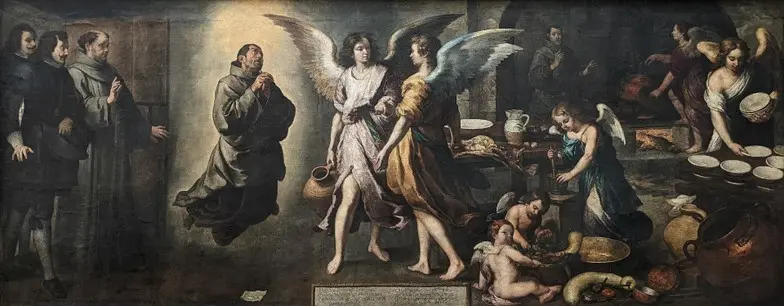A Flemish painter based in Antwerp, Flanders, Peter Paul Rubens (1577–1640) was deeply religious and his art reflected this. He celebrated his marriage with a wedding portrait of unequaled excellence: “Rubens and Isabella Brandt, the Honeysuckle Bower” (circa 1609–10).
Rubens, 32 at the time, sits with his new wife, Isabella Brandt, 18, in a beautifully composed double portrait. We find the couple sitting under a honeysuckle bower as if taking a short rest after a brief stroll. The poses of the figures show the bond that happens when marriage takes place, as they lean toward each other, forming a gentle oval space.
The new husband hovers attentively over his bride. A finger of his left hand points toward his bride’s ring as the hand rests on his sword, a sign of protectiveness. His right hand supports hers. Their hats bend toward each other gracefully.
The couple’s affluent wedding apparel is the latest middle-class fashion of the day, especially shown in Isabella’s ruff, Florentine hat, brocade bodice, and taffeta skirt. She casually holds a fan in her left hand, symbolic of feminine gentility and a woman’s supportive role in marriage. Rubens sports a black hat with a cold clasp, and a shimmering satin doublet; his orange stockings add a touch of male whimsy.
The artist balances the warm hues of Isabella’s dark red skirt and his orange stockings with the pale blue of his collar and Isabella’s ruff, as well as her cuffs and a deep blue blanket thrown on a grassy mound beneath her. The soft blue of the sky in the background balances the striking colors in the foreground.

Symbols of Fidelity and Bliss
The beautifully composed artwork brings in traditional symbols that show the enduring bond of marriage. The pose shows how the figures are joined on several levels. Isabella’s hand lies over her new husband’s, suggesting the ritual binding of hands in the Roman marriage contract ceremony called “dextratum juncio,” which signifies harmony, friendship, and loyalty.The figures are surrounded by a honeysuckle arbor in a garden of love, so to speak, which represents marital fidelity. The honeysuckle flower and its clinging vines are prized by the French and carry deep meanings in Western culture as symbols of happiness, affection, and deep-abiding love. Honeysuckle is a plant with sweet-smelling flowers and entwined vines that, in this painting, embodies the married couple’s intermingled lives and everlasting faithfulness that arises from marriage vows.
Rubens chose to present a full-length double portrait giving the figures equal space in the composition as his homage to the union of a man and woman in marriage.
The marriage took place upon Rubens’s return from Italy, in St. Michael’s Abbey in Antwerp. The painting was given to Isabella’s father.
The expressions of Rubens and his wife in this charming painting show that they are both aware of the precious gift they have given each other and the solemnity of their marriage vows. Perhaps wedding portraits today can embody the significance of these vows as exquisitely as Rubens displayed in this beautiful wedding double portrait.








